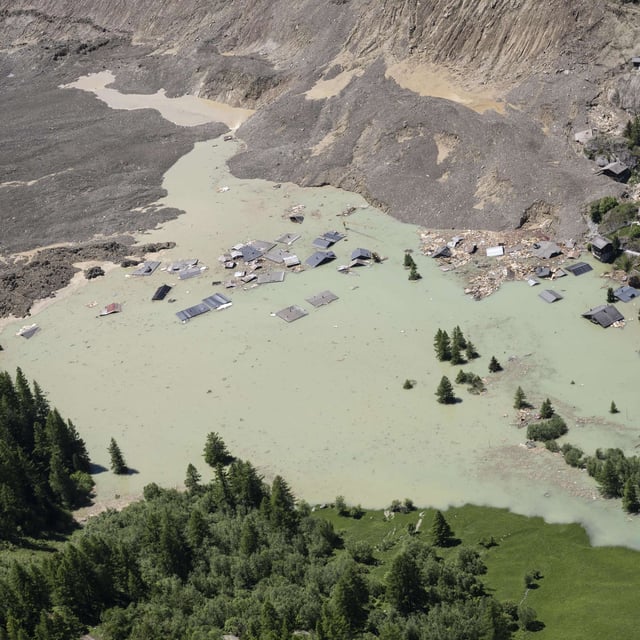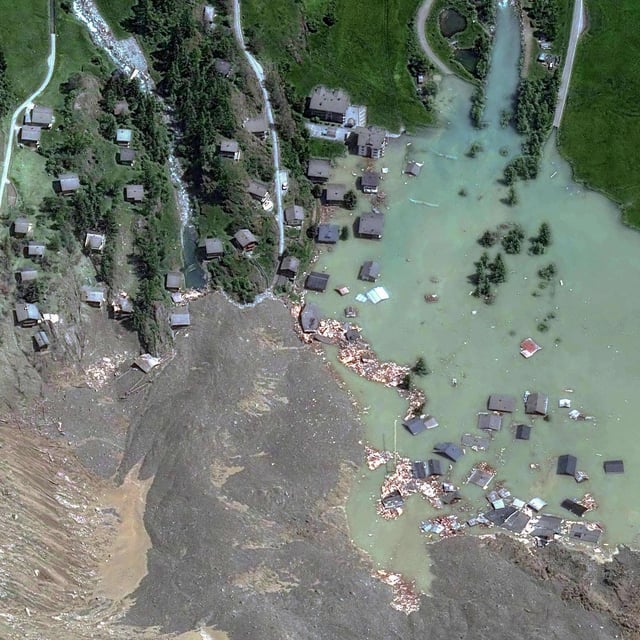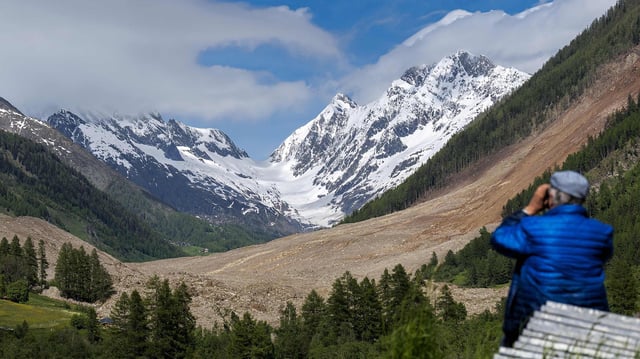Overview
- The May 28 collapse of the Birschgletscher, triggered by a rockslide from the Kleine Nesthorn, dumped three million cubic metres of ice, rock and mud into Blatten, forming a two-kilometre-long debris dam.
- By May 30, seepage through emerging channels in the dam began draining the Lonza, halting the rapid water-level rise that had peaked at 80 centimetres per hour.
- Authorities have paused further evacuations in downstream communities of Gampel and Steg; pressure sensors at the dam site are under continuous monitoring.
- Blatten lies almost entirely buried under debris up to 200 metres thick; about 90% of its homes were destroyed, leaving one resident unaccounted for.
- Geologists caution that ongoing rockfalls above the dam could renew instability, highlighting broader concerns over permafrost thaw linked to climate change.



